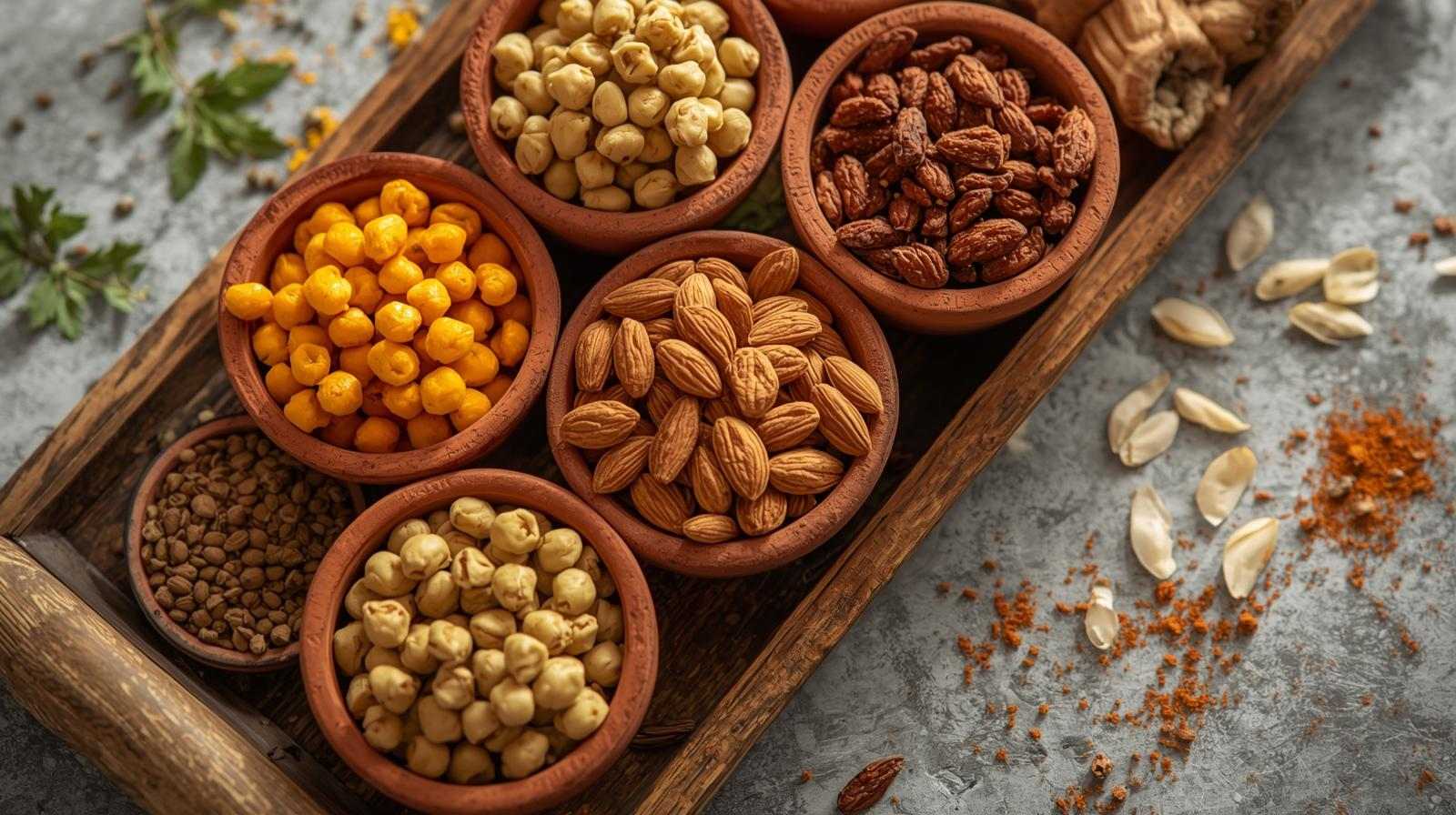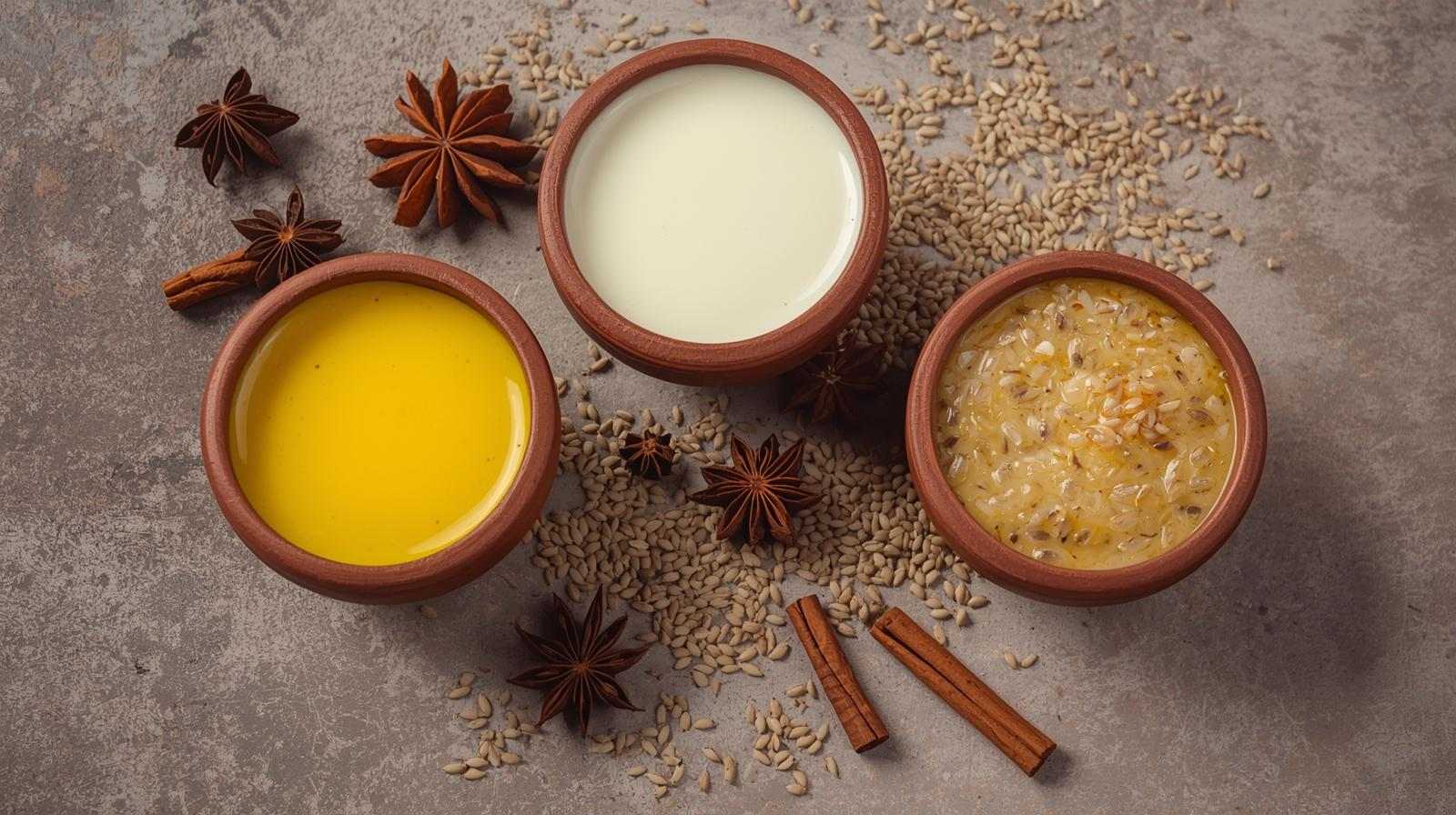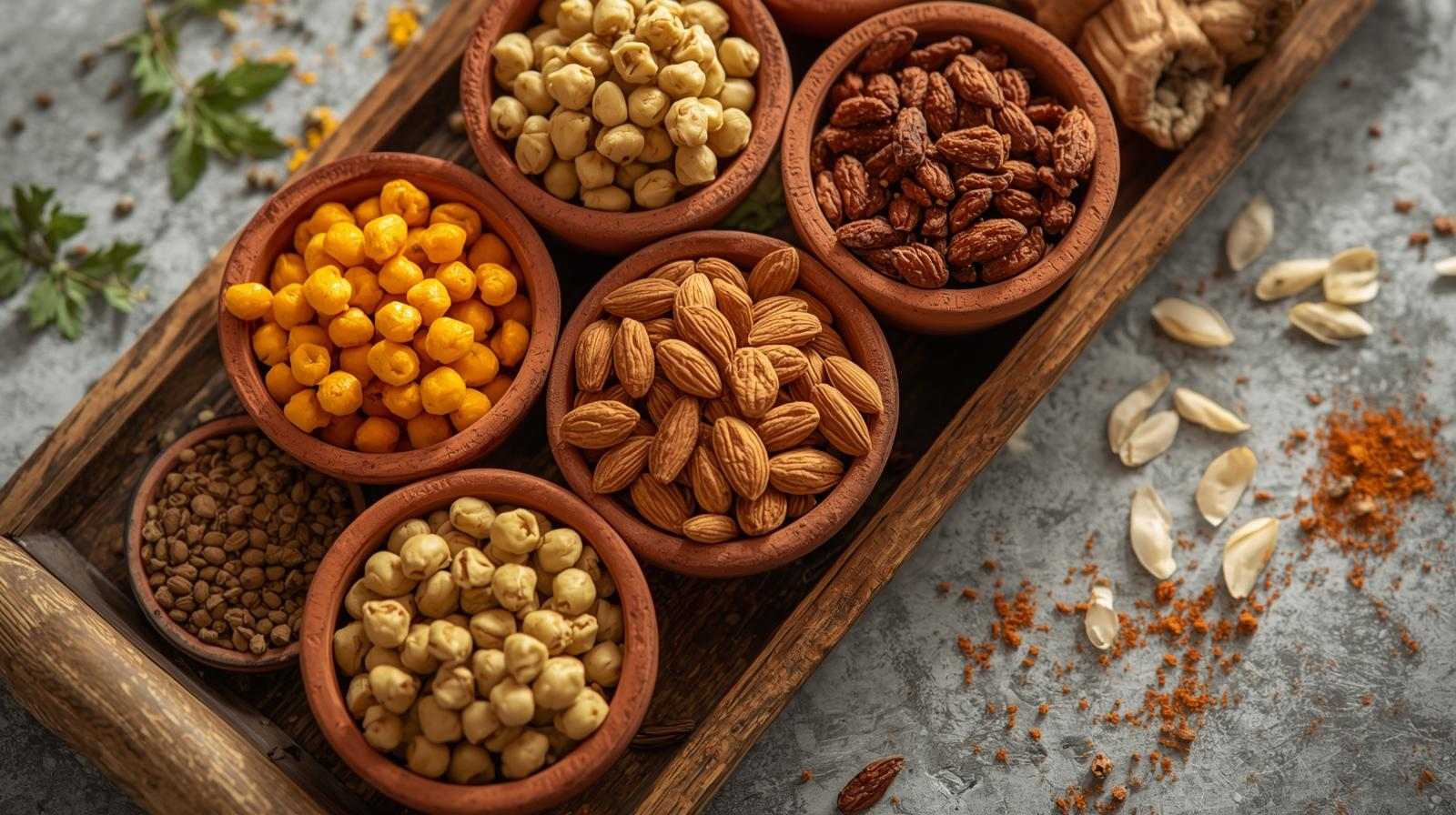Heritage Food and Fitness: A Healthy Tradition in India

Introduction
Have you ever paused mid-snack and wondered what lies behind that satisfying crunch we all love? For many of us in India, snacking isn’t just about filling a gap—it’s about tradition, taste, texture and heritage. Recent studies show that sticking to time-tested food patterns—so-called “heritage diets”—is strongly linked to better health. (News-Medical)
At the same time, our modern-day push toward fitness has opened the door to new snack possibilities—protein-rich, fibre-packed, crunchy delights that fuel our day. In this article, we explore the synergy of heritage food, fitness foods, and crunchy delights—how we can weave them into our lives in India, in a way that honours our roots and supports our health.
1. What We Mean by ‘Heritage Food’
“Heritage food” refers to the traditional cuisines, ingredients, and foodways passed down generations—often local, region-specific, rooted in culture and place. For example, in India, there are indigenous grains, cold-pressed oils, fermented foods, and seed-based preparations that carry both cultural meaning and nutritional value. (delhiconnections.club)

Research indicates that heritage-style diets—rich in whole grains, legumes, vegetables and minimal ultra-processed foods—offer significant health benefits. (News-Medical)
In our usage here, heritage food is not simply “old” food; it’s food that has stood the test of time, and can adapt to the demands of wellness and fitness in a modern India.
2. Why Heritage Foods Matter for Fitness & Health
When we dig into the evidence, heritage foods bring several advantages for our health and fitness journey:
-
Higher fibre and whole-food content: Traditional diets often emphasise legumes, whole grains, seeds, and vegetables—these contribute to better digestion, better nutrient absorption and slower energy release. (delhiconnections.club)
-
Reduced reliance on ultra-processed snacks: As diets shift worldwide toward refined grains, sugars and processed foods, the risk of chronic disease rises. Heritage diets help counter that. (News-Medical)
-
Cultural familiarity and better adherence: When foods align with culture, flavour and memory, it’s easier for us to stick with them over time—important for any fitness plan.
-
Potential for sustainability and local sourcing: Using indigenous grains and oils can also support local agriculture and reduce reliance on imported or highly industrialised foods.
Hence, we position heritage food not as a relic, but as a foundation for modern fitness-oriented eating—especially useful in India’s growing wellness market.
3. What We Mean by ‘Fitness Foods’
By “fitness foods”, we refer to those items that specifically support activity, body composition, recovery, and general wellness. These include:

-
Foods rich in protein (plant or animal) to support muscle repair and maintenance
-
Foods with good fats to support hormone and metabolic health
-
Snacks and meals that provide sustained energy and satiety (not just quick sugar hits)
-
Options that align with our lifestyle (workouts, active days, recovery days)
For example, one Indian-focused article lists snacks like roasted chickpeas (high in protein and fibre), sattu-based snacks, paneer cubes for muscle-friendly dairy, nuts for brain and fat-goodness. (NAKPRO NUTRITION)
Our goal is to show how combining heritage food with fitness-food principles gives us snacks and meals that taste good, feel good, and do good.
4. The -Crucial Role of Crunchy Delights
Crunchy textures inherently appeal to us—they satisfy oral sensory needs, help signal fullness, and make snacking more enjoyable. From a fitness viewpoint, crunchy snacks that are nutrient-dense (instead of empty calories) are a win.
In the Indian context, many traditional snacks are crunchy (roasted nuts/seeds, makhana/fox-nuts, millet khakhra, roasted legumes) and can easily be re-imagined to fit fitness goals. For example:
-
Roasted chana: protein + fibre + crunch. (NAKPRO NUTRITION)
-
Makhana (fox nuts): low-fat, high in fibre, crunchy, suitable for weight management. (toneopeats.com)
-
Millet khakhra: crunchy, made from ancient grains, offers fibre & iron. (The Times of India)
Therefore, when we talk about “crunchy delights”, we mean snackable, satisfying textures that deliver nutrition, not just taste.
5. Heritage Grains & Seeds: Foundations of Crunch & Nutrition

Let’s spotlight a few heritage-grain / seed items that merge texture and nutrition beautifully:
Millets (e.g., bajra, jowar, ragi)
Millets are among the ancient grains in India; when made into thin discs like khakhra, they turn into crunchy snacks. For example, millet khakhra made from bajra or jowar is noted as “the ultimate crunchy millet snack” in an Indian context—high in fibre, iron, and antioxidants. (The Times of India)
Seeds (flax, sesame, etc.)
Traditional Indian cuisine used seeds like flax (alsi), sesame in chutneys, ladoos—they provide healthy fats, crunch, micronutrients. (delhiconnections.club)
Roasted legumes
Legumes such as chickpeas (chana), moong sprouts, when roasted, provide crunch and a high protein/fibre combination. (NAKPRO NUTRITION)
Fermented heritage foods
Though not always crunchy, fermented foods like curd, buttermilk, and millet porridges bring gut-health benefits that complement the crunchy snacks. (delhiconnections.club)
By combining these heritage items with fitness-forward preparation (less oil, mindful flavouring), we can enjoy crunchy delights that also deliver wellness.
6. Snacks That Bridge Heritage + Fitness + Crunch
Here are some snack ideas that illustrate our theme:

a) Roasted chickpeas with Indian masala
-
Dry roast chickpeas, toss with cumin, turmeric, and a little salt—serve as a crunchy mid-afternoon snack.
-
Why: high in plant-protein + fibre + satisfying texture. (NAKPRO NUTRITION)
b) Makhana (fox nuts) popped and lightly seasoned
-
Season with pepper, chilli powder, and a pinch of salt—yield a crunchy low-fat snack.
-
Why: good for weight management, low glycaemic impact. (toneopeats.com)
c) Millet khakhra (bajra/jowar) with hummus or curd dip
-
These thin, crispy discs are ‘heritage-based’, crunchy, portable; paired with a protein-rich dip give a fitness boost. (The Times of India)
d) Roasted flax/seeds mix with nuts
-
Mix roasted sesame seeds, flax seeds, almonds, maybe some jaggery, lightly for a sweet-crunch mix. Provides healthy fats, minerals, and crunch. (Heritage seed use) (delhiconnections.club)
e) Sprouted moong or sattu cucumber boats
-
Though more chew than crunch, they can be made crunchy by roasting lightly or using a crisp cucumber as a base. Good pre-/post-workout snack per Indian fitness suggestions. (NAKPRO NUTRITION)
These examples show how we can honour heritage, support fitness, and enjoy crunch together.
7. Meal & Snack Planning: Integrating into the Indian Lifestyle
How do we fit these ideas into our busy Indian lives—college schedules, work routines, gym/training, travel? Here’s a guide:

- Morning: Start with a heritage-grain breakfast (e.g., millet porridge, ragi dosa) to provide sustained energy rather than refined cereal.
-
Mid-morning snack: Roasted chickpeas or seed-nut mix (crunchy, portable).
-
Lunch: Combine legumes + whole grains + vegetables (heritage pattern) and pair with crunchy salad (e.g., roasted seeds topping) for texture.
-
Evening snack: Makhana or millet khakhra + curd/hummus dip while studying or working.
-
Pre-workout: Something light, crunchy, with good carbs + a little protein—e.g., roasted chickpeas or sattu-cucumber.
-
Post-workout: Yoghurt or paneer cubes + maybe some crunchy seed–nut mix to supply protein + healthy fats.
-
Dinner: Stick to heritage roots—fermented food (if possible), millets, beans, vegetables; avoid heavy refined breads.
-
Travel/college / on-the-go: Pre-pack crunchy heritage-based snacks to avoid fast-food traps.
By structuring our day with crunchy, heritage-inspired, fitness-supporting foods, we align texture, tradition and health.
8. Avoiding Pitfalls: What to Watch Out For
While the theme is promising, we must be mindful of certain concerns:
-
Crunch does not mean unhealthy: Many traditional crunchy snacks are deep-fried, high in oil/salt. We need to adapt to roasting, minimal oil.
-
Portion control: Even good snacks can contribute excessive calories if portion sizes are large. Balanced portions matter. (FICSI)
-
Balance of nutrients: A crunchy snack high in fat or salt may taste good, but may not serve fitness goals (e.g., macronutrient imbalance).
-
Allergies/sensitivities: Seeds, nuts, legumes may trigger allergies—so tailor accordingly.
-
Modern processing: Some “heritage” labelled foods may be processed; always check quality, ingredients.
-
Timing matters: Snacks too close to workout or dinner may impact digestion or sleep; plan snack timing accordingly.
By being aware of these pitfalls, we maximise the benefit from our heritage-fitness-crunch approach.
9. The Indian Context: Why This Matters Now
In India, the confluence of culture, food heritage and growing fitness awareness creates an ideal moment for this approach:
-
The country is experiencing a wellness boom: more gyms, more awareness of protein, more demand for healthier snacks.
-
At the same time, we have a rich heritage of grains, seeds, legumes, and fermented foods that we may have underutilised. For example, one article highlights traditional Indian cooking fats and ancient grains being re-recognised for their health value. (delhiconnections.club)
-
The shift away from ultra-processed, refined-grain, high-sugar diets is particularly relevant in India, given rising rates of lifestyle diseases. Heritage diets offer an anchor. (News-Medical)
-
Indian snack culture is widespread (tea-time, campus snacking, office mid-snacks). If we can re-engineer snack culture to incorporate crunchy heritage-fitness foods, we reach people where they are.
-
In college or young adult life (which you mentioned earlier as the target), portability, flavour, and texture matter. Crunchy snacks fit perfectly into that lifestyle—just need the nutrient backing.
Therefore, this methodology isn’t abstract—it aligns with Indian culture, lifestyle and the modern fitness agenda.
10. Implementation Tips: From Kitchen to Campus
Here are practical tips for us (students, working professionals, fitness enthusiasts) to bring it alive:
-
Batch-prepare crunchy snacks: e.g., Sunday evening, roast a big batch of chickpeas + flax/sesame/nuts. Store in airtight jars.
-
Use heritage ingredients as a base: Replace standard wheat biscuits with millet khakhra, and use roasted seeds instead of chips.
-
Flavour smartly: Use Indian spices—turmeric, cumin, ajwain, chilli, pepper—for savoury crunch; or jaggery + sesame seeds for sweet-crunch. This ties back to heritage flavours.
-
Portion pack for college/office: Pre-pack snack portions (say 30g) so you don’t overeat.
-
Integrate snack timing with workouts: Crunchy snack ~1-1.5 hours pre-workout, and another protein-rich snack post-workout.
-
Mix textures: Combine crunchy (snack) + soft (e.g., curd/hummus) in one session to satisfy sensory needs and sustain fullness.
-
Stay hydrated: Crunchy snacks may be more fibrous—water intake is key.
-
Experiment with flavour & format: Don’t stick rigidly; try roasted millet bars, seed-nut fudge, crunchy legume chips, etc.
-
Monitor response: Note how your body responds—energy levels, fullness, digestion. Adjust seasoning/fats accordingly.
By making these steps part of our routine, we build a sustainable habit rather than a one-off fix.
11. Case Study: A Day in the Life of Crunchy Heritage-Fitness Eating
Let’s map out a sample day for us (college/office-based) using this approach:
-
7:30 am – Breakfast: Millet porridge with roasted flax seeds + chopped nuts + a little honey. (Heritage grain + seed + crunch)
-
10:30 am (Mid-morning snack) – Small jar of roasted chickpeas seasoned with cumin & chilli + a handful of almonds. (Crunchy snack supporting fitness)
-
1:00 pm Lunch – Jowar roti or brown rice + mixed legumes curry + salad topped with roasted sesame seeds.
-
4:00 pm (Pre-workout snack) – Makhana popped, lightly salted, served with a small banana. (Crunch + light carbs)
-
6:00 pm Workout – Gym or sports session; proper hydration.
-
7:15 pm (Post-workout snack) – Paneer cubes or Greek-style curd with crushed seed-nut mix.
-
8:30 pm Dinner – Bajra khakhra served with hummus or curd dip + sautéed vegetables + little cold-pressed mustard oil. (Crunch + heritage + fitness)
-
Before bed – Warm turmeric milk (heritage drink) to support recovery and relaxation.
This structure supports energy across the day, honours traditional ingredients/textures, and allows for crunchy snack moments—not just indulgence but nutrition.
Conclusion
In our journey toward health and vitality, we need more than just following the latest fad. We need approaches that resonate, sustain, and delight. By embracing heritage foods as a base, aligning them with fitness-oriented nutrition, and indulging in crunchy delights (smartly), we build a food lifestyle that is culturally rooted, texture-rich, and wellness-driven.
Key Takeaways:
-
Heritage diets are more than nostalgia—they bring genuine health benefits and align with fitness goals.
-
Crunchy snacks don’t have to be empty calories; when built with heritage grains/seeds/legumes and minimal processing, they can be powerful.
-
For India especially (college, working population, wellness-seekers), this blended approach fits lifestyle, flavour and culture.
-
Implementation is about planning, batch-prep, flavouring, proper timing and portion control.
-
Evaluate your own response—energy, fullness, digestion—and adapt your crunchy heritage-fitness snacks accordingly.
We encourage you to experiment, taste, adapt—and share what works for you. After all, our food journey is personal, evolving, and should be joyful.
FAQ
Q: Are heritage foods always low-calorie and automatically good for fitness?
A: Not necessarily. Heritage foods can be processed or prepared in ways that increase calories (deep frying, heavy oils, sugars). The key is how you prepare them—use roasting, minimal oils, mindful seasoning, and correct portions.
Q: I’m vegetarian/vegan—can I still build crunchy fitness snacks from heritage foods?
A: Absolutely. Many heritage snacks in India are plant-based: roasted legumes (chickpeas, moong), seeds (flax, sesame), millets (bajra, jowar), khakhra, and makhana. Pair these with plant-based protein dips (e.g., hummus, sprouted moong salad) to support fitness goals.
Q: How much of the snack should be “crunchy heritage” vs. main meal?
A: Think of crunchy heritage snacks as supplements or bridges between meals—not sole meals. They serve to satisfy mid-meal hunger, fuel workouts, or bridge the gap. Main meals should still be balanced and include adequate protein, vegetables, and whole grains.
Q: My college lifestyle is busy—how do I ensure I maintain the crunch + fitness balance without overdoing salt/oil?
A: Pre-pack snacks (roasted chickpeas, seed-nut mix) in portioned jars. Use minimal oil (dry-roasting works). Season with spices instead of relying purely on salt. Carry water. Choose dips/sides that are light (curd, hummus). Avoid buying processed crunchy snacks from vending machines—those usually add extra salt and fat.
Q: Are there heritage drinks that support fitness, too?
A: Yes. Traditional drinks such as buttermilk (chaas), fermented millet porridge, and turmeric milk bring benefits for digestion, inflammation and recovery. Including them enhances your heritage-fitness approach (though they may not always provide crunch). For example, traditional Indian cooking fats and heritage beverages are now being globally recognised for their health value. (delhiconnections.club)
Thank you for reading! If you’d like recipes, snack-prep guides, or college-friendly meal plans based on this theme, I’d be happy to craft them for you.



